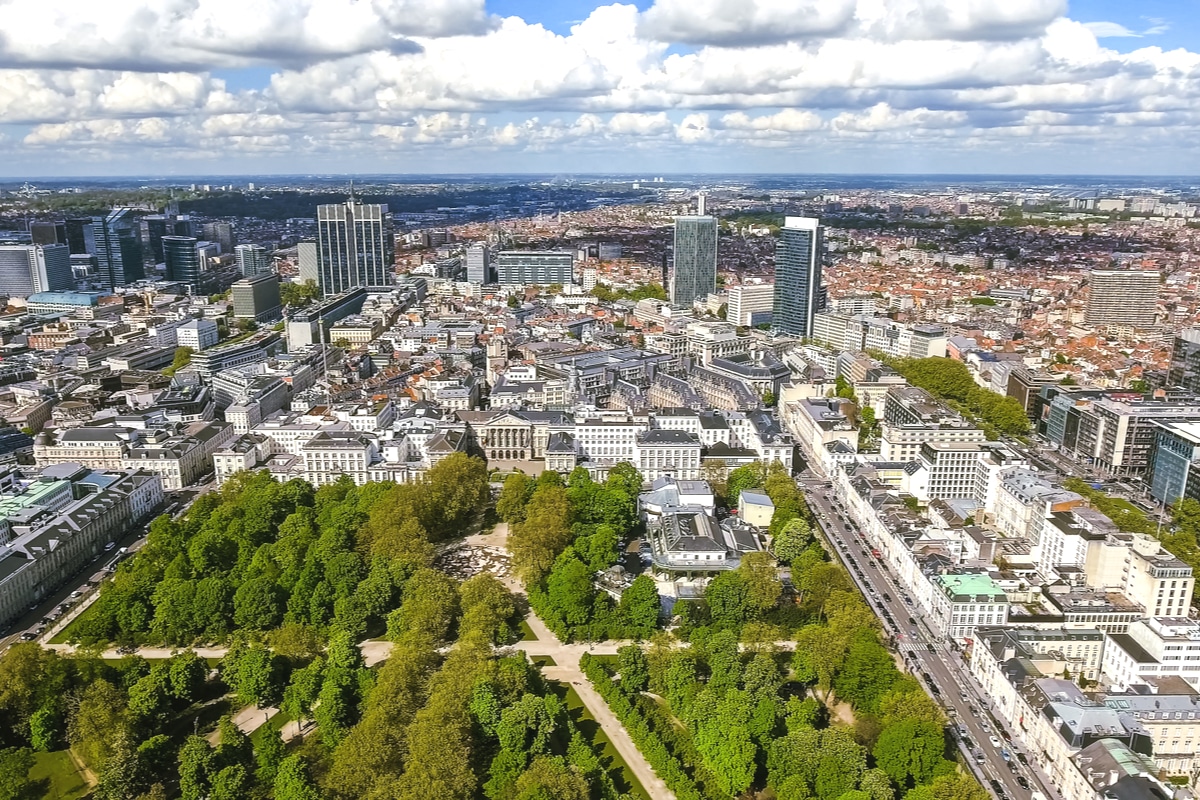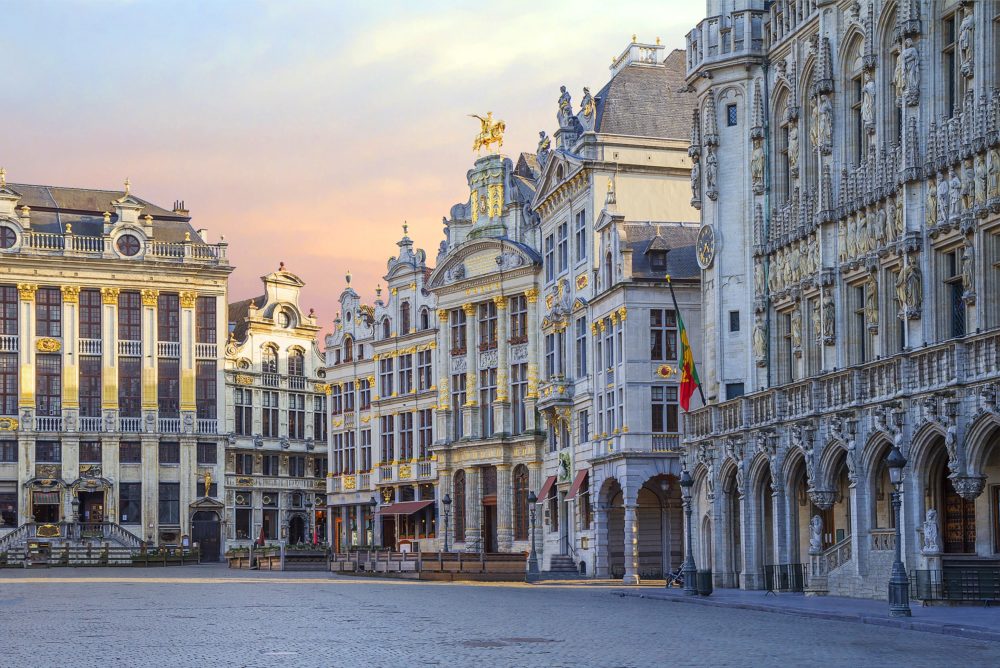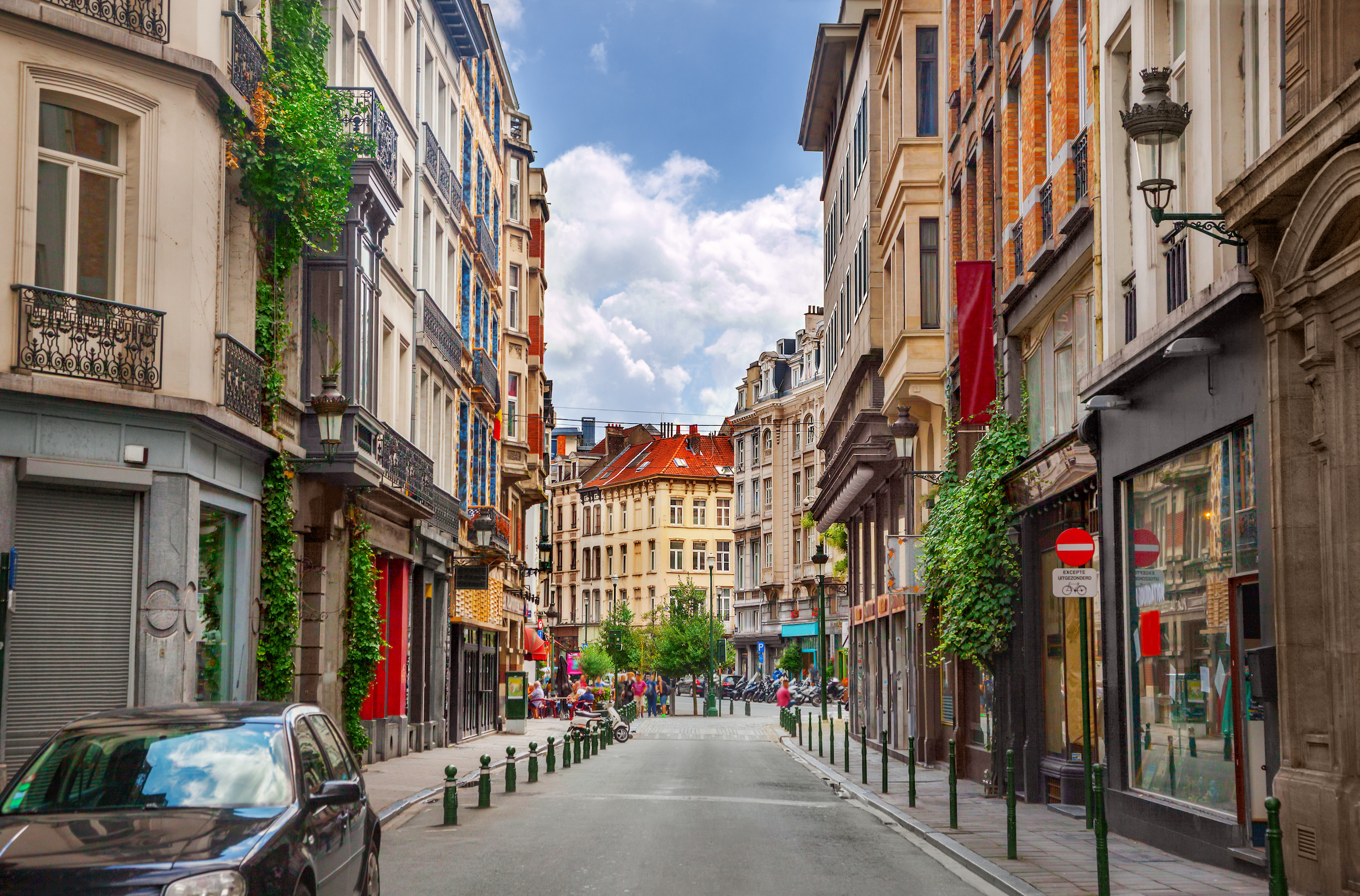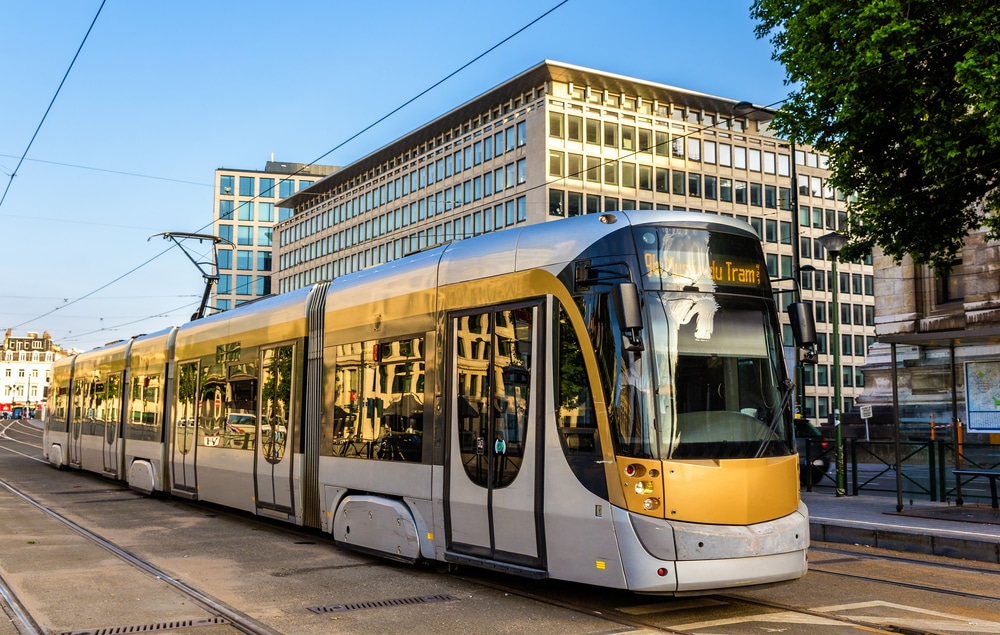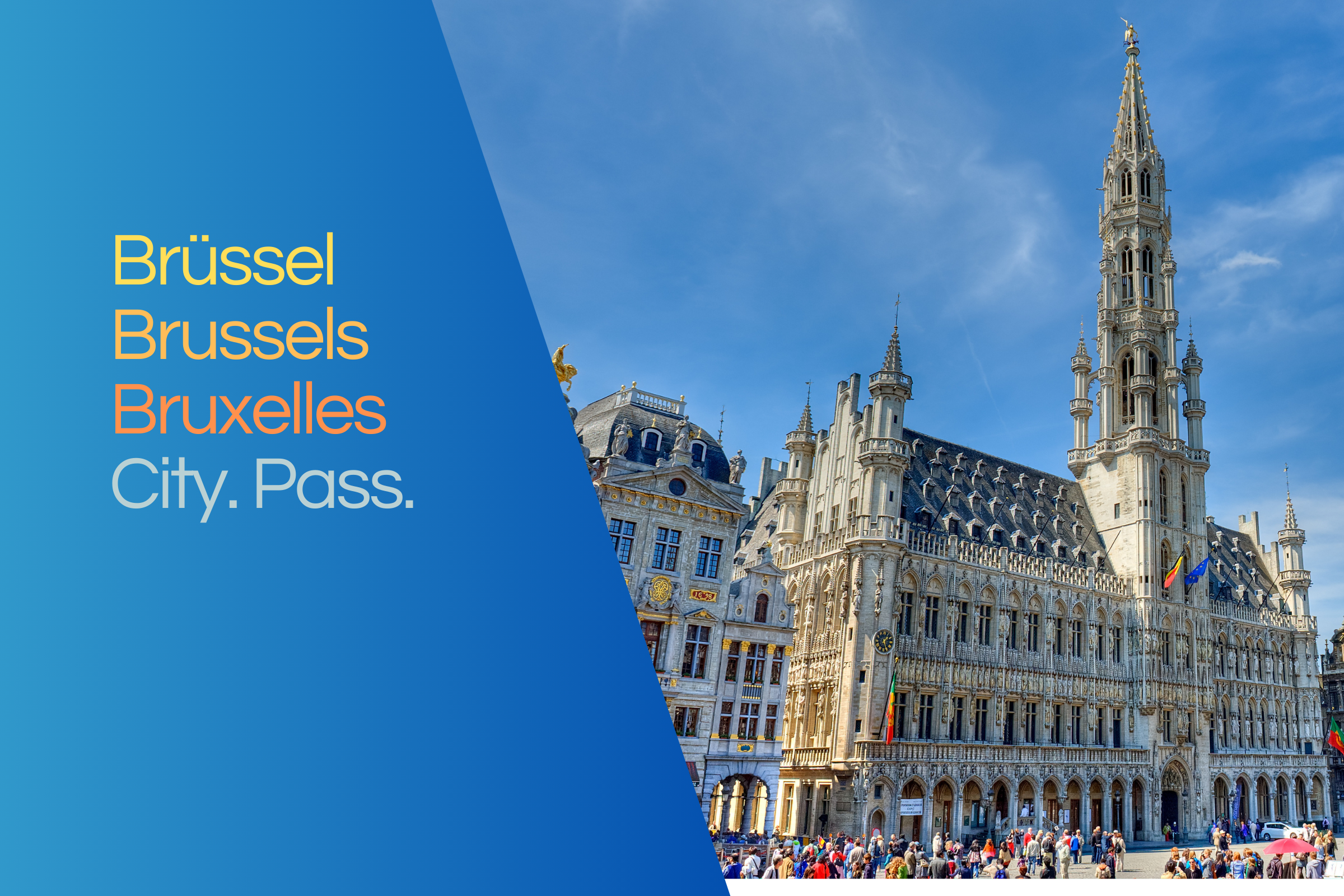The city centre
The historic and current city centre of Brussels is located on the river island of Saint-Géry in the Senne, named after the former Bishop Gaugerich of Cambrai (550-626). He is said to have built a church here in the late 6th century in honour of the Archangel Michael, which is regarded as the nucleus of the city of Brussels. Today, the early 16th century Cathedral of St. Michael and St. Gudula stands here in the Place Sainte-Gudule.
Next to and in the immediate vicinity of this church, there are also many other famous Brussels landmarks. In some places, for example, you can still see the remains of the first medieval city wall from the 13th century, which surrounded the former port on the Senne. The archaeological site of the Coudenberg Palace from the 12th to 18th centuries is also located here.
However, the main tourist attraction in the city centre is certainly the central and approx. 1.5 hectare large square Grand-Place/Grote Markt with the Gothic town hall and the surrounding baroque buildings from the 11th century, which has been a UNESCO World Heritage Site since 1998. The square is particularly busy on weekdays during the flower market and on Sundays during the bird market. Every two years in July, the large colourful flower carpet can be admired here. The luxurious Galeries Royales Saint-Hubert, built in 1847, can be visited all year round.
The district of Laken: where the world was a guest and football is worshipped
Located in the north of the city, the district was first documented in the late 11th century and, with the exception of the period between 1331 and 1795, was an independent municipality until its final incorporation in 1921. Until the early 19th century, Laeken was a small rural village; subsequently, the gradual onset of industrialization ensured strong growth.
Around 1850, the district already had about 4,000 inhabitants, today there are about 52,000. The most famous local attractions are the residence of the Belgian royal family, the Laeken Castle, built from 1782 to 1784 in the classicist style, and the surrounding Laken/Laeken Park (Parc de Laeken), also called "Little Switzerland" because of its many bridges, ponds, artificial rocks and valleys. Frequently visited and photographed is also the neo-Gothic Church of Our Lady (Onze-Lieve-Vrouwekerk/Église Notre-Dame de Laeken) from 1872, where several members of the Belgian royal family have found their final resting place.
In 1935 and 1958, the local Heysel Plateau was the site of the World's Fair, the site is now called Heyselpark, and it is also home to the world-famous Atomium, a symbol of the peaceful use of nuclear energy. Also located in Laken is the popular Mini-Europe park, where some 80 European cities and about 350 houses have been recreated, and the 50,000-seat King Baudouin Stadium, the largest of its kind in Belgium.
The Neder-over-Heembeek district: where alchemists once experimented
Also in the north of Brussels is the district of Neder-Over-Heembeek, which was incorporated together with Laken and Haren in 1921. In 1112 and 1155, the two former districts of the farming village of Over-Heembeek and Neder-Heembeek came under the rule of the Abbaye de Dieleghem monastery. From the 15th to the 17th century the village and the local castle belonged to the wealthy Busleyden family, and in 1814 the two villages were united into one parish. As early as 1618, the village became known beyond the region because Johan Baptista van Helmont (1580-1644), a Flemish scholar and follower of the teachings of the famous alchemist, physician, astrologer, mystic and philosopher Paracelsus Theophrastus Bombast von Hohenheim (1493-1541), allegedly received the formula for making gold here from an unknown person. The later Pope Leo XIII (Vincenzo Gioacchino Pecci) in 1843 also lived temporarily in the small town.
An architectural attraction in Neder-Over-Heembeek is the 18th-century church of Saint-Nicolas, which was deconsecrated in 1932 and has served as a cultural centre since its extensive restoration in 1935. A popular meeting place for the whole of Brussels is the modern swimming pool on Rue de Lombartzijde with sauna and solarium. A recommended recreation area in the district is the seven-hectare Parc de Meudon on the site of the former castle of the same name. The nearest bus stops are Wimpelberg or Val Maria.
Haren district: The transport hub in the northeast of the city.
Like Laken and Neder-Over-Heembeek, Haren in the north-east also joined Brussels as a new district in 1921. Because of the many large companies in the area, Haren is linked to the rest of the city by three railway stations (Haren, Buda, Haren Sud/Zuid). The first Brussels airport was also located here between 1914 and the early 1950s. The European headquarters of NATO was built on the site in the 1960s and has been based in Haren since 1967. The European Organisation for the Safety of Air Navigation (EUROCONTROL) also operates from Haren, and between 1932 and 1997 the French car manufacturer Renault had one of its largest production plants here.
To this day, Haren is strongly characterised by large industrial estates and transport links. As nice excursion destinations you can visit for example the swimming pool "Le Tetard-Le Dauphin" in the Rue de Verdun and the railway museum "Train World" at the Place Princesse Elisabeth. A little further away but easy to reach are the army museum "Koninklijk Legermuseum (Musée Royal de l'Armée)" in the Parc du Cinquantenaire, the "Belgian Comic Strip Center" in the Rue des Sables and the green Parc Josaphat on the Avenue des Azalees.
The European Quarter: from here, the fortunes of the "old continent" are guided
Not far from the aforementioned Parc du Cinquantenaire, between the districts of Eterbeek and Plasky, lies the European Quarter, with numerous EU institutions and administrative bodies, as well as many embassies and representative offices. The Berlaymont building, built between 1963 and 1967 on Rue de la Loi/Wetstraat, is home to the European Commission, including the offices of the President, the Commissioners and the Press Officers, as well as the Secretariat-General and the Legal Service of the European Commission.
The neighbouring Justus Lipsius Building, inaugurated in 1995 and covering a good 215,000 m², houses the central conference and press centre of the Council of the EU and the European Council. The Justus Lipsius Building is connected to the Europe Building, completed in 2016, by two pedestrian bridges. The Lex Building extension on Rue de la Loi/Wetstraat, completed in 2007, houses a canteen and the translation service of the General Secretariat of the European Council. The Charlemagne Building houses the European Commission's two Directorates-General for Trade and Enlargement. The Triangle Building of 2009 on Kortenberglaan/Avenue de Cortenbergh has housed the headquarters of the European External Action Service (EEAS) since 2012.
The Louise/Louiza-Roosevelt district: where justice and diplomacy are to be found.
The district in the south of Brussels is also home to numerous embassies, such as those of Bolivia, Montenegro, Argentina, Brazil, Ecuador, Suriname, Croatia, Paraguay and Costa Rica on the main and longest connecting street, Avenue Louise/Louizalaan, between the lively Place Louise and the Bois de la Cambre. Also in the immediate vicinity are the Palace of Justice of Brussels (Palais de Justice de Bruxelles/Justitiepaleis) on Place Poelaert, built between 1866 and 1883, the ornamental Étangs d'Ixelles/Vijvers van Elsene on Rue Guillaume Stocq, artificially created in the 19th century, and the neighbouring Hof van de Koning/Jardin du Roi park.
The park around the former Cistercian abbey La Cambre/Ter Kameren is also a green oasis of peace. The same applies to the green area Bois de la Cambre/Ter Kamerenbos, which covers a good 1.2 km². A representation of the Anglican community (Church of England) is the "Drievuldigheidskathedraal" on Rue Capitaine Crespel not far from Avenue Louise.
